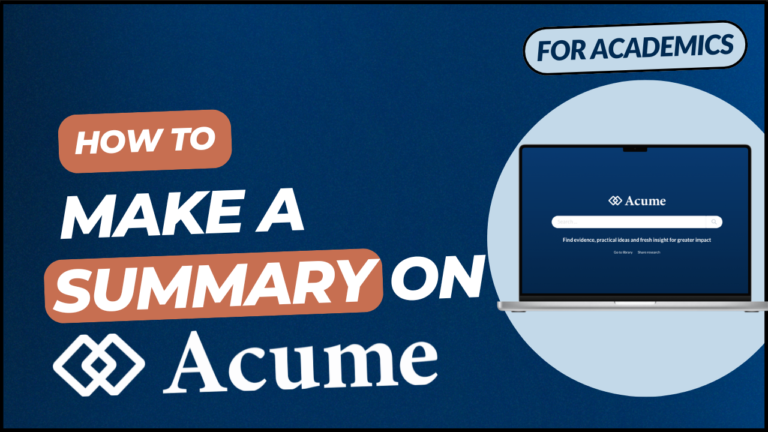Photo by Ryan Quintal on Unsplash
Impactful research
Unlock opportunity on LinkedIn: Tips for early career scholars

Written by Allegra Clark
As an academic, it is extremely important to maintain an active and professional presence online. This not only highlights your research and makes it accessible to a wider audience but also advances your career opportunities too. In this blog we discuss Linkedin.

15 August 2024
While you tirelessly research the most pressing societal challenges, your work often goes unnoticed outside of the university, meaning it’s not making the desired impact. To help you overcome this issue, I have created a short blog series on how to ensure you are strategically set up on the most strategic platforms for positioning you online. The platforms I will explore are Linkedin, X, and other online opportunities for broader reach with professionals and fellow academics.
In this blog, I explore Linkedin.
Your LinkedIn account serves as a professional landing page for managing your academic profile. I hope you already have an account (if not – you need one!), but you still need to optimise your profile to maximise the exposure of your research.
Here are some steps to ensure your LinkedIn profile is at its best:
1. Profile picture and banner
Make sure you have a profile picture. Profiles without pictures are far less likely to be read. Use a professional photo that clearly shows your face and fills the entire space available for the profile picture – and where you look happy and friendly. Your banner is an opportunity to add something extra about who you are, what you stand for, or promote a personal website. Use a Linkedin banner template on Canva to get started.
2. Link to universities and research institutes
On your work history, make sure to find and connect to the official profiles of institutions or companies you are working at / have worked at to increase the chance of being seen.
3. Complete your bio
Write two short and compelling paragraphs that include your current academic position, the focus of your research, and any other aspects of your research that might encourage others to reach out to you. This not only adds keywords to your profile that help others discover you, but it also gives a solid introduction to who you are. Make sure it sounds human and portrays you as a great person to work with. And of course, remember to triple check you have no grammatical or spelling errors.
4. List the outputs you have delivered
Either in your bio as a list beneath your intro, or within your work experience itself include a list of all your published, unpublished work, courses, field projects, and collaborations. This not only adds more keywords but it provides a list of achievements.
5. Add evidence
If possible, add evidence to support your achievements. This can include:
- A sharable version of a paper
- Slides from a conference presentation
- Links to websites or blogs that discuss a project or collaboration
- Course one-pagers
- Student testimonials (with permission)
- Quantifiable metrics for every claim you make (e.g., number of students, scale of research, journal impact, project outcomes)
You can also post about these as they become available, providing a continuous update of your accomplishments. Making a post also files it onto your profile.
6. Build your connections
Start adding all your colleagues, former collaborators, journal contacts, and others you have worked with. It is normal and expected to receive connection requests. However, it is better to do it immediately, so after a conference, add the speakers and those you connected with. Doing this over time establishes you a solid network.
7. Expand your network
Not only can you connect with fellow colleagues and academics, but LinkedIn is also a great space to begin networking virtually with practitioners and policymakers from around the world who may be working in a similar field to you or who may find your research relevant and useful for their work. It can be daunting to send a connection request to someone you have never met, but if you have a good reason, it’s perfectly acceptable. For example, you might see that they are working with a community you want to learn about, or they lead a research you were inspired by.
8. Join Linkedin groups
Consider joining LinkedIn groups. Spend an hour searching the key topics you research, and look for other groups that your dream collaborators might have joined. This provides more opportunities to strengthen connections and engage in conversations with others in your field. When you share something on your profile, share it in the group too.
9. Keep it concise
While I have just mentioned all these things you need to add, there is no need for lots of context. Think of your profile as a living CV, and make it skimmable. To be effective, you want to show off your accomplishments without hiding them within too many words.
10. Post regularly
Making your first post can feel like a big deal – but it’s not. Post about your research and the learning you gained. This is a service to others, as it lets them discover your work. Posting regularly also allows you to reach beyond your immediate network because when your network engages with your post, their network can see it too. So write a question to encourage engagement.
While LinkedIn is an excellent platform for building your professional network and positioning yourself for career opportunities, it is primarily geared towards broad professional connections and may not always help get your research into the right hands. With LinkedIn, your research should talk to a broad audience, as it is unlikely to accidentally land in the feed of the professional who needs it most.
This is where Acume comes in. Acume is designed specifically for academics to share their latest research with the exact policymakers or practitioners who can use it in their work, ensuring your research makes a difference and provides you with tangible achievements to add to your LinkedIn profile.
By creating a free account on Acume, you can post your latest research as a practical summary to your Acume profile. We then connect your findings directly with those who can apply it in practical, impactful ways, thereby enhancing your social impact.
Join Acume today to expand your network and maximise the impact of your research.
Related Stories








